Spotlight
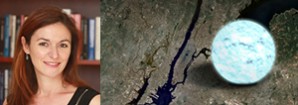
Professor Feryal Özel Wins Guggenheim Fellowship
The Guggenheim Foundation has awarded Astronomy/Steward Professor Feryal Özel a 2016 Guggenheim Fellowship. As the Guggenheim website says "Often characterized as “midcareer” awards, Guggenheim Fellowships are intended for men and women who have already demonstrated exceptional capacity for productive scholarship or exceptional creative ability in the arts." Dr Özel was the only Astrophysicist awarded in 2016, and one of only fifteen natural scientists.
You can see the UA press release HERE, and the Guggenheim bio HERE. Professor Özel's website is HERE.
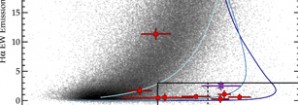
AAS NOVA Spotlights Grad Student Decker French's Paper
Bright transient flares have been observed when stars pass too close to a supermassive black hole, and are disrupted by tidal forces. Recent work by graduate student Decker French, Professor Ann Zabludoff, and Dr. Iair Arcavi shows that these events occur more often during a specific phase of a galaxy's evolution. The host galaxies of these events show little-to-no recent star formation, but evidence of a higher star formation rate in their recent pasts. This study quantifies how unusual the host galaxies are by comparing their properties to galaxies selected from the Sloan Digital Sky Survey. Galaxy-galaxy mergers may be the source of both these recently declining star formation histories, and the prevalence of tidal disruption events. You can see the AAS Nova article HERE. Below this text you'll find an enlargement of one of Decker's figures, along with an explanation.
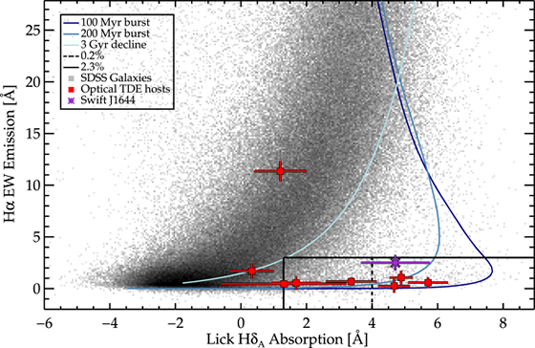
Plot of Balmer absorption (which traces star formation in the last Gyr) vs. nebular line emission (which traces current star formation) for SDSS galaxies (grey) and the host galaxies of tidal disruption events (colored points). The host galaxies fall preferentially in the region with little current star formation, but more significant star formation in their recent pasts, which is otherwise sparsely populated by galaxies in the SDSS.
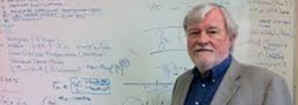
Steward Regents' Professor Dave Arnett to Receive Honorary Degree from the University of Kentucky
The University of Kentucky Board will confer an honorary degree (Honorary Doctor of Science) upon UA Astronomy/Steward Regents' Professor W. David Arnett. Dave is a native son of Kentucky, so it's probably an exceptional pleasure for him. Congratulations, Dave!
We quote from the Kentucky press release:
"Leaders in the areas of astrophysics; military and the law; food chemistry; and service to victims of sexual violence have been selected to receive honorary doctorates from the University of Kentucky at its Commencement ceremonies in May. An honorary degree pays tribute to those whose lives and work exemplify professional, intellectual, or artistic achievement and who have made significant contributions to society, the state and the University of Kentucky. Nominated by the University Joint Committee on Honorary Degrees and approved by the University Senate, the honorary degree recipients approved by the UK Board of Trustees today are: W. David Arnett, who will receive an Honorary Doctor of Science. One of the world's preeminent astrophysicists, Arnett grew up in Ballard County and began his college academic career as a physics major at UK. He went on to earn his doctorate at Yale University and later held academic positions at Rice University, the University of Texas, the University of Illinois and the University of Chicago. He currently is Regents' Professor at Steward Observatory at the University of Arizona where he continues to conduct research to bring further clarity to understanding the universe. Highly honored for his work in astrophysics — an area in which he has published more than 400 papers and a renowned scientific book — Arnett also has a physical law named for him. Arnett's Law describes how stars regulate energy transport as they explode..."

The Peter Wehinger Fellowship Fund
Steward Observatory Astronomer and Development Officer Peter Wehinger passed away on April 27, 2015. During his tenure at the UA (1995 to 2012), Peter helped advance major telescope projects and worked to support astronomy graduate students. Known for his work on comets and quasars, Peter previously held appointments in astronomy at the University of Michigan, Tel-Aviv University, the Royal Greenwich Observatory, the Max Planck Institute for Astronomy in Heidelberg, and Arizona State University. In 1967 Peter married Susan Wyckoff, herself an astronomer and longtime collaborator.
Peter was inspired to pursue a career in astronomy through his explorations of the sky, using his home-built telescopes, from his backyard in Goshen, New York. While in college he held summer appointments at the U.S. Naval Observatory, the Utrecht Observatory, and the Lowell Observatory. At the University of Michigan he oversaw the funding, design and construction in 1969 of a 1.3-m telescope located near Ann Arbor. Still in use and now named the McGraw-Hill Telescope, this facility has since been relocated to a mountain top site, Kitt Peak, Arizona, adjacent to the telescopes of the Kitt Peak National Observatory, where it is operated by the MDM Observatory Consortium.
While at Steward Observatory, Peter played major roles in establishing the Arizona Astronomy Board, creating the Mt. Lemmon Sky Center, obtaining initial funding for the LSST project, developing a collaboration with the Tokyo Atacama Observatory group, and assisting students in obtaining scholarship funds – to list a few of his accomplishments and contributions.
Peter greatly enjoyed teaching and working with students. He was particularly dedicated and successful in supporting the efforts of graduate students. Aligned with this strong interest of Peter’s and in his memory, a fund has been established to recognize graduate students in the Department of Astronomy with demonstrated records of exceptional or creative work. Sue Wyckoff has asked that those that would like to honor Peter's memory and legacy at Steward Observatory consider making a contribution to the University of Arizona Foundation in support of this fund. The contributed funds will be used to endow "Peter Wehinger Fellowships" in the Department of Astronomy, for the support of the educational and research activities of selected graduate students. Checks should be made payable to "University of Arizona Foundation", with a note on the memo/subject line of, For Wehinger Fund/Department of Astronomy and be sent to:
University of Arizona Foundation
1111 N. Cherry Avenue
P.O. Box 210109
Tucson, AZ 85721-0109
or online at https://uafoundation.org/netcommunity/donations/wehinger-fellowship-fund
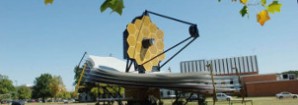
Neither Rain Nor Sleet Nor Dark Of Night...
While making tests of the JWST telescope instrument suite, the teams, including a contingent from UA (Stacey Alberts, Karl Misselt, and Lisa May Walker, among others over an extended period) were stranded at Goddard in a blizzard. HERE is an article from Atlantic. A NASA press release about the primary mirror completion is found HERE.
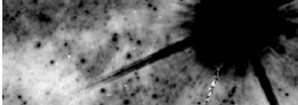
Finding the Progenitor of the Supernova in Cen A Using MagAO
"A week ago (February 8), a bright supernova, SN 2016adj, appeared in the active galaxy NGC 5128 (Centaurus A). Classified as Type IIb, its progenitor is believed to be a very massive star in a binary system, undergoing a significant mass loss before explosion. However, direct identification of the progenitor remains challenging. Since SN 2016adj is only 4" from a bright foreground star, it is an ideal target for Arizona's Magellan Adaptive Optics system and its visible AO camera. Steward Observers Jared Males, Laird Close, and Katie Morzinski observed the supernova on February 13. Steward grad student Ya-Lin Wu compared the new MagAO image to archival HST and VLT data, and we were able to identify a possible progenitor star. Notably, this is the 5th Type IIb progenitor identified in pre-explosion images over the past 20 years. Yesterday we posted our results on the Astronomer's Telegram." You can find the link HERE and the blog from which these words were excerpted (with permission) HERE.
Pages

For Public
Public events include our Monday Night Lecture Series, world-reknowned Astronomy Camp and Mt Lemmon Sky Center.

For Students
A good place to start if you want to become an undergrad major or grad student, or need to find our schedule of classes.

For Scientists
Find telescopes and instruments, telescope time applications, staff and mountain contacts, and faculty and staff scientific interests.




